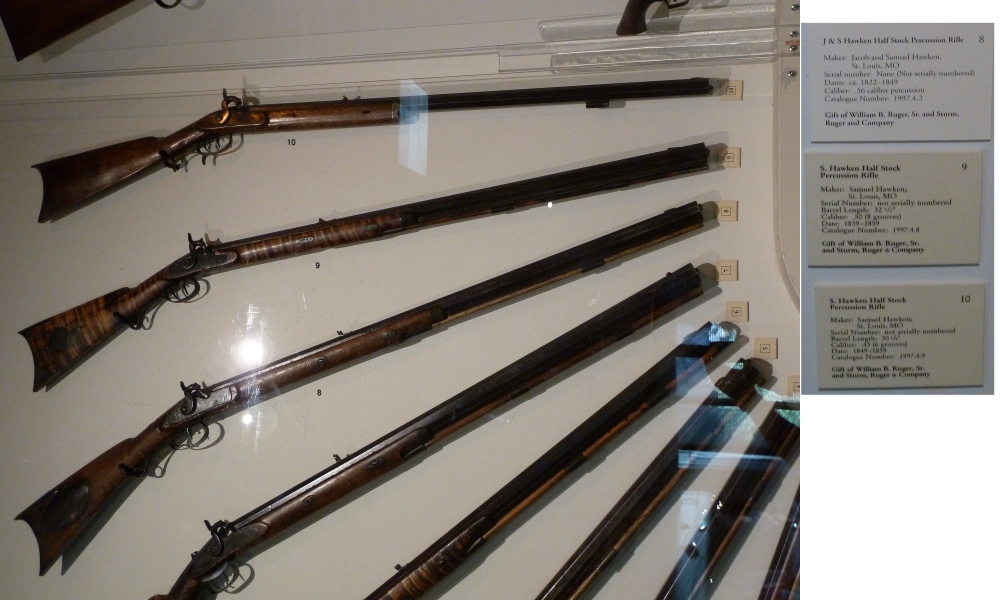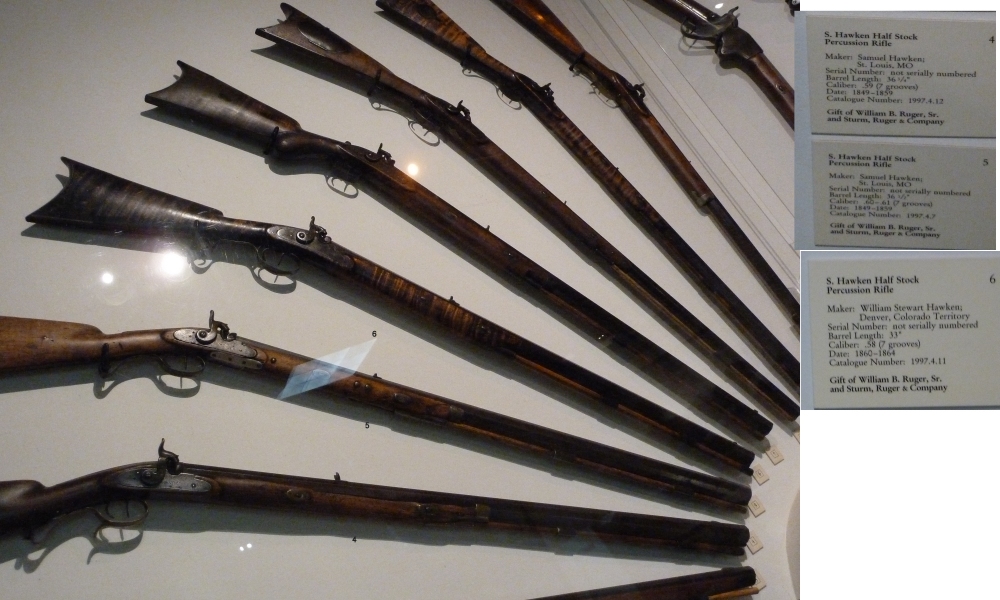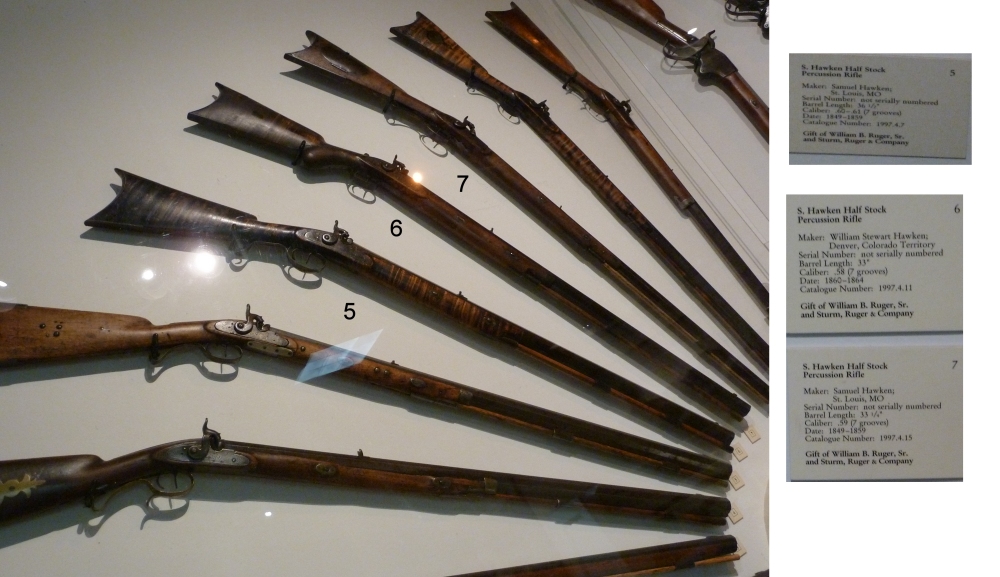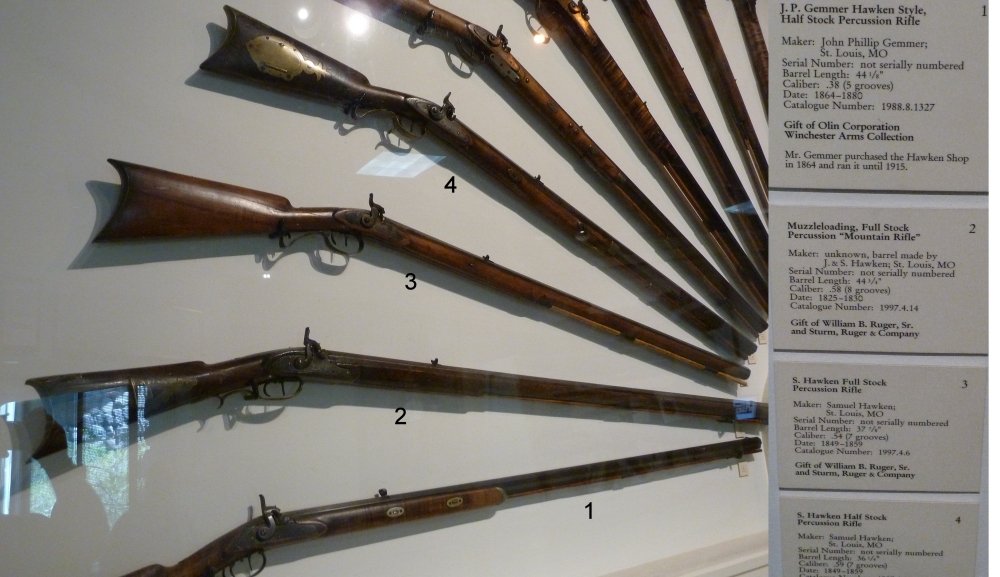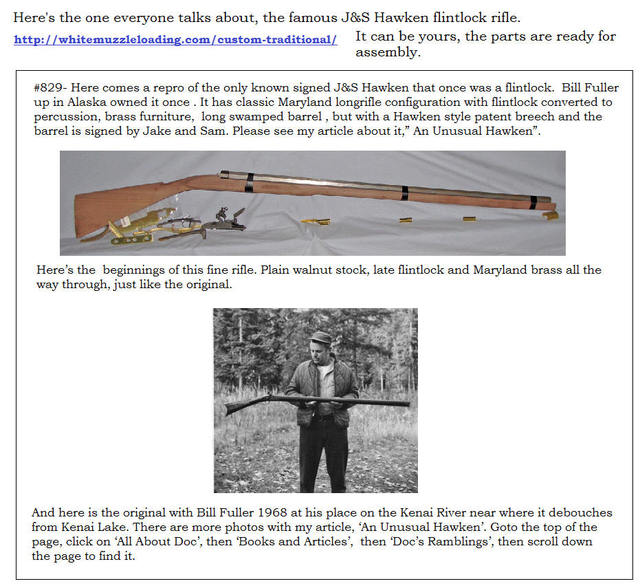The only reason I brought this book up was most folks don't have an idea of the numbers of early production seen in North America of firearms delivered with just government contracts and manufacturers in our country.
Here's an example of firearms supplied for a few years from 1813 to 1816. Remember this was firms with government contracts, not counting the numbers being supplied to the trading firms and individual traders which in several reports doubled the government numbers. Remember we were also in a war at this time - War of 1812.
TYPES OF WEAPONS PRODUCED
Shown below is a list of weapons produced for each year of the four years of contracts.
<table class="MsoNormalTable" style="width:478.5pt;mso-cellspacing:0in;mso-padding-alt:5.25pt 5.25pt 5.25pt 5.25pt" border="0" cellpadding="0" cellspacing="0" width="638"><tr><td style="width:17.0%;padding:5.25pt 5.25pt 5.25pt 5.25pt" valign="top" width="17%">ARMS</td><td style="width:17.0%;padding:5.25pt 5.25pt 5.25pt 5.25pt" valign="top" width="17%"><div align="right">1813
</td><td style="width:17.0%;padding:5.25pt 5.25pt 5.25pt 5.25pt" valign="top" width="17%">
1814
</td><td style="width:17.0%;padding:5.25pt 5.25pt 5.25pt 5.25pt" valign="top" width="17%">
1815
</td><td style="width:17.0%;padding:5.25pt 5.25pt 5.25pt 5.25pt" valign="top" width="17%">
1816
</td><td style="width:17.0%;padding:5.25pt 5.25pt 5.25pt 5.25pt" valign="top" width="17%">
TOTAL
</td></tr><tr><td style="width:17.0%;padding:5.25pt 5.25pt 5.25pt 5.25pt" valign="top" width="17%">
COMMON GUNS</td><td style="width:17.0%;padding:5.25pt 5.25pt 5.25pt 5.25pt" valign="top" width="17%">
2,911
</td><td style="width:17.0%;padding:5.25pt 5.25pt 5.25pt 5.25pt" valign="top" width="17%">
5,595
</td><td style="width:17.0%;padding:5.25pt 5.25pt 5.25pt 5.25pt" valign="top" width="17%">
3,806
</td><td style="width:17.0%;padding:5.25pt 5.25pt 5.25pt 5.25pt" valign="top" width="17%">
344
</td><td style="width:17.0%;padding:5.25pt 5.25pt 5.25pt 5.25pt" valign="top" width="17%">
12,656
</td></tr><tr><td style="width:17.0%;padding:5.25pt 5.25pt 5.25pt 5.25pt" valign="top" width="17%">
CHIEF'S GUNS</td><td style="width:17.0%;padding:5.25pt 5.25pt 5.25pt 5.25pt" valign="top" width="17%">
3,448
</td><td style="width:17.0%;padding:5.25pt 5.25pt 5.25pt 5.25pt" valign="top" width="17%">
2,934
</td><td style="width:17.0%;padding:5.25pt 5.25pt 5.25pt 5.25pt" valign="top" width="17%">
3,645
</td><td style="width:17.0%;padding:5.25pt 5.25pt 5.25pt 5.25pt" valign="top" width="17%">
91
</td><td style="width:17.0%;padding:5.25pt 5.25pt 5.25pt 5.25pt" valign="top" width="17%">
10,118
</td></tr><tr><td style="width:17.0%;padding:5.25pt 5.25pt 5.25pt 5.25pt" valign="top" width="17%">
RIFLES</td><td style="width:17.0%;padding:5.25pt 5.25pt 5.25pt 5.25pt" valign="top" width="17%">
0
</td><td style="width:17.0%;padding:5.25pt 5.25pt 5.25pt 5.25pt" valign="top" width="17%">
801
</td><td style="width:17.0%;padding:5.25pt 5.25pt 5.25pt 5.25pt" valign="top" width="17%">
737
</td><td style="width:17.0%;padding:5.25pt 5.25pt 5.25pt 5.25pt" valign="top" width="17%">
0
</td><td style="width:17.0%;padding:5.25pt 5.25pt 5.25pt 5.25pt" valign="top" width="17%">
1,538
</td></tr><tr><td style="width:17.0%;padding:5.25pt 5.25pt 5.25pt 5.25pt" valign="top" width="17%">
PISTOLS</td><td style="width:17.0%;padding:5.25pt 5.25pt 5.25pt 5.25pt" valign="top" width="17%">
531
</td><td style="width:17.0%;padding:5.25pt 5.25pt 5.25pt 5.25pt" valign="top" width="17%">
1,319
</td><td style="width:17.0%;padding:5.25pt 5.25pt 5.25pt 5.25pt" valign="top" width="17%">
786
</td><td style="width:17.0%;padding:5.25pt 5.25pt 5.25pt 5.25pt" valign="top" width="17%">
0
</td><td style="width:17.0%;padding:5.25pt 5.25pt 5.25pt 5.25pt" valign="top" width="17%">
2,636
</td></tr><tr><td style="width:17.0%;padding:5.25pt 5.25pt 5.25pt 5.25pt" valign="top" width="17%"> </td><td style="width:17.0%;padding:5.25pt 5.25pt 5.25pt 5.25pt" valign="top" width="17%">
_____
</td><td style="width:17.0%;padding:5.25pt 5.25pt 5.25pt 5.25pt" valign="top" width="17%">
_____
</td><td style="width:17.0%;padding:5.25pt 5.25pt 5.25pt 5.25pt" valign="top" width="17%">
_____
</td><td style="width:17.0%;padding:5.25pt 5.25pt 5.25pt 5.25pt" valign="top" width="17%">
____
</td><td style="width:17.0%;padding:5.25pt 5.25pt 5.25pt 5.25pt" valign="top" width="17%">
______
</td></tr><tr><td style="width:17.0%;padding:5.25pt 5.25pt 5.25pt 5.25pt" valign="top" width="17%"> </td><td style="width:17.0%;padding:5.25pt 5.25pt 5.25pt 5.25pt" valign="top" width="17%">
6,890
</td><td style="width:17.0%;padding:5.25pt 5.25pt 5.25pt 5.25pt" valign="top" width="17%">
10,969
</td><td style="width:17.0%;padding:5.25pt 5.25pt 5.25pt 5.25pt" valign="top" width="17%">
8,974
</td><td style="width:17.0%;padding:5.25pt 5.25pt 5.25pt 5.25pt" valign="top" width="17%">
273
</td><td style="width:17.0%;padding:5.25pt 5.25pt 5.25pt 5.25pt" valign="top" width="17%">
26,948
</td></tr></table></div>
For other archives you may want to check the Canadian and British sources. They should have detailed information on supplies or shipments as well as related items sent to the Indian Trade and who issued them.





